
A page of imitations of Septimius Severus (193-211)
Since the Iron Curtain came down it has become clear that huge numbers of Severan imitations were produced in the Balkans. However, there are few scholarly articles on these.
Imitations from this period are common. Here they are grouped by ruler in chronological order. One of each is illustrated here. The linked pages illustrate and discuss these and additional pieces.
Pieces tend to belong to one of these categories:
1) Solid-silver imitations with unofficial
style
[These are rare. Why
were they produced? The solid silver eliminates the profit
motive.]
2) Plated-silver imitations, struck, and
with unofficial style
[Struck for profit,
these are very common.]
3) Cast imitations (in official style) but
with no plating. They appear to be copper or other base metal.
[Did these ever have
surface-silvering? Many do not look like it, but some have some
thin light-metal surface. Casts cannot be created with the same
silver-foil method used for fourrées. So, if they did have
surface silvering, was it more like that of the later
antoniniani? Perhaps the counterfeiters perfected a process
used later to make the surface-silvered antoninini of emperors
(for example, Probus and Aurelian) in later third century.
Many extant ants show no traces of silver, but all(?) were
originally surface-silvered.]
4) Gray/black base-metal imitations
[Good (official?)
style, very dull gray or black metal, apparently not copper.
Probably cast from official coins. But how did they get the
silvering required to make them deceptive? Or, did they serve as
currency even without being deceptive?]

A page of imitations of
Septimius Severus (193-211)
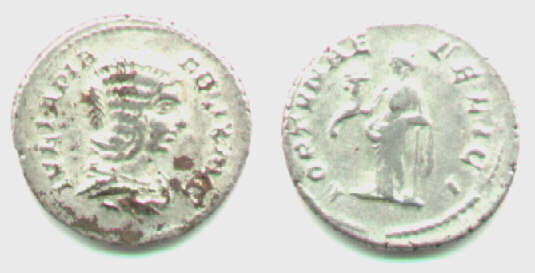
A page of imitations
of Julia Domna, wife of Septimius Severus
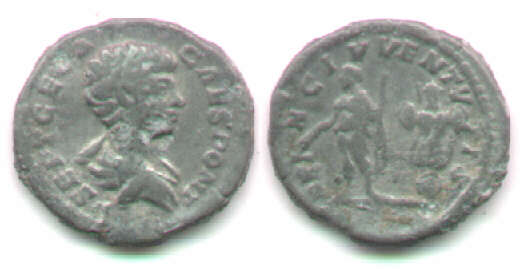
A page of imitations
of Geta (AD 198-209-212)
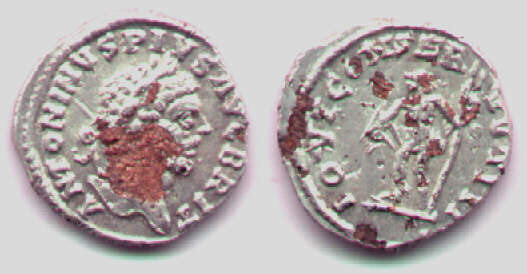

A page of imitations
of Caracalla (AD 196-217) and his wife, Plautilla
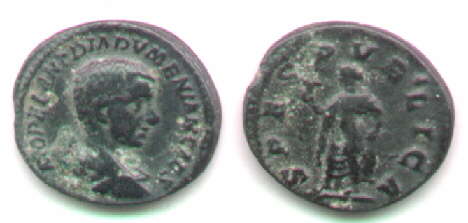 This piece: Diadumenian
This piece: Diadumenian
A page of
imitations of Macrinus (AD 217-218) and his son Diadumenian

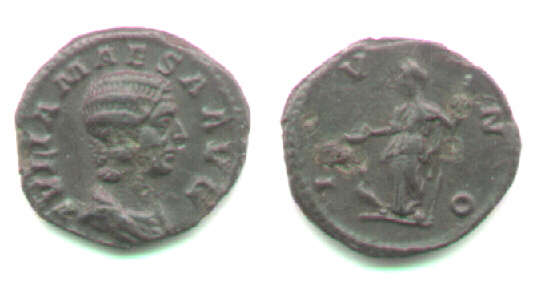
A page of imitations
of Elagabalus (AD 218-222) and his family (here, his
grandmother, Julia Maesa)


A page of imitations of Severus Alexander (AD
222-235) and his Mother, Julia Mamaea

A page of imitations of Maximinus I (AD 235-238)

A page of imitations of Gordian III (AD 238-244)
 This piece:
Philip I
This piece:
Philip I
A page of imitations of Philip I (AD 244-249),
his wife Otacilia Severa, and their son Philip II
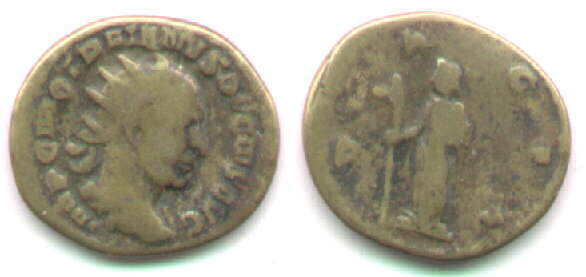 This piece: Trajan Decius
This piece: Trajan Decius
A page of imitations of Trajan Decius (AD
249-251) and Trebonianus Gallus (AD 251-253)
This completes the list of fourrés through
Trebonianus Gallus in 253.
Gallienus imitations are relatively scarce. Some are found as a
very small percentage of the coins in large hoards of
Gallo-Roman coins that include groups of "barbarous radiates" of
Postumus and especially Tetricus I and II. This site does
not have a page on "barbarous radiates" (not for lack of
interest, but for lack of the writer's time). I exhibit just
this one unusual Gallienus imitation.
IMP GALLIENVS AVG, radiate head right. Well
done, but a little crude.
/PAX AVG, Pax standing left holding up flower
in right and with transvers sceptre in left, V in field left,
star in field right.
A thick AE17-15, 4.09 grams, 6:00.
The small diameter and remarkably thick flan
make this stand out as irregular in hand. On the screen the
style is not bad. It is not far from official style, but I judge
that it is on the imitation side of the fine line between
official and irregular.
Return to the main Table of Contents page on Roman imitations.